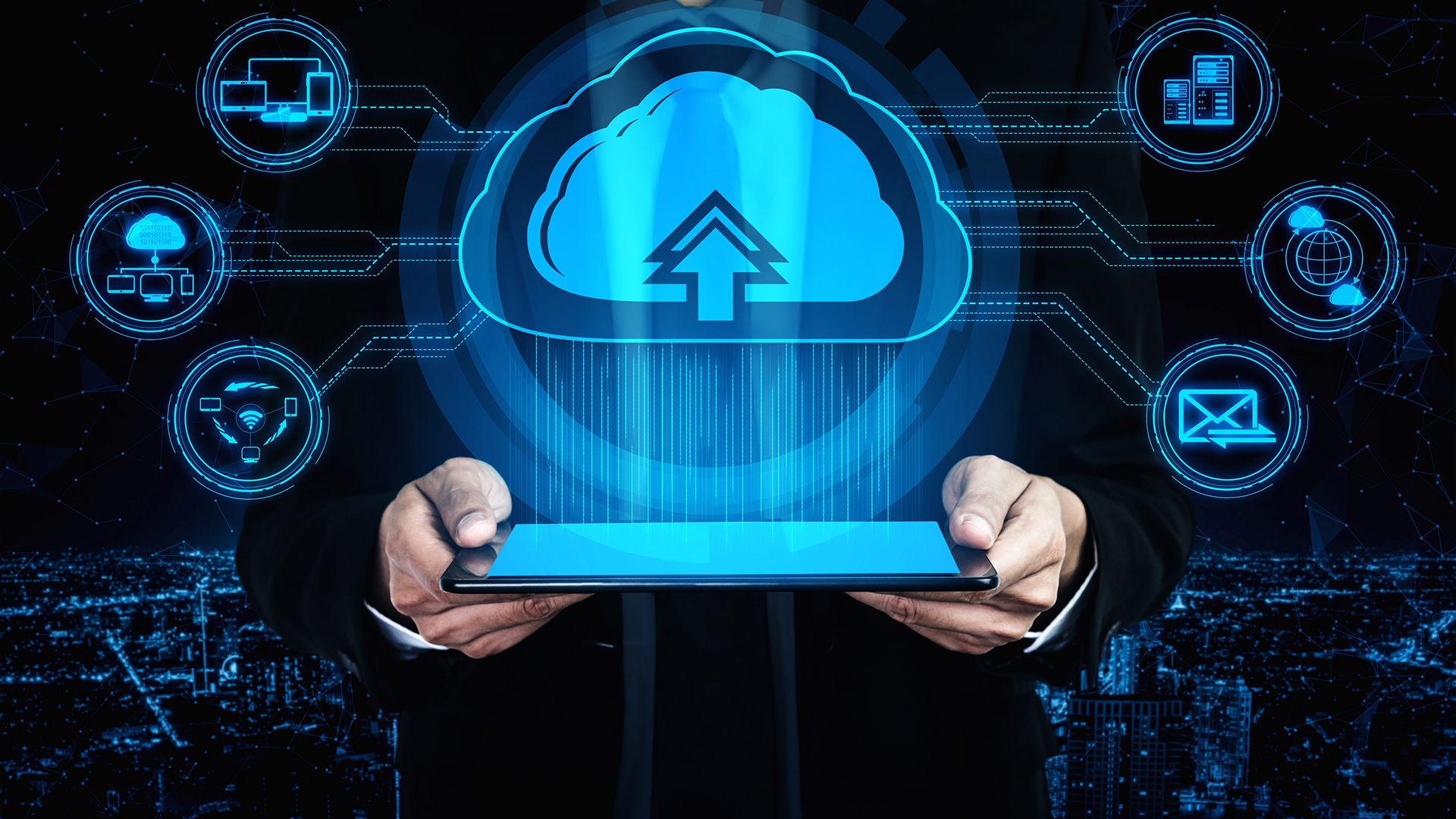The world is moving towards Cloud Computing trends! But are you?
It’s a shock how cloud computing trends have taken over the tech world like a storm. In 2025, emerging trends in Cloud Computing have made cloud solutions a strategic necessity rather than a luxury.
In cloud services 2025, the key industries benefiting from cloud computing are Healthcare, Finance & Banking, Retail & E-commerce, Manufacturing, Education, Media & Entertainment, Automotive, and Travel & Hospitality.
Cloud computing services can make workloads easier by providing instant scalability by adjusting resources on demand. It also provides rapid deployment of applications and services while making it cost-effective.
Fun Fact: A significant amount of data, estimated to reach 200 Zettabytes by 2025, is stored in the cloud.
Understanding Cloud Computing – What is Cloud Computing?
The delivery of computing services like servers, storage, databases, networking, software, and analytics – over the internet (the cloud) is called cloud computing services.
Types of Cloud Computing Services:
- PaaS (Platform as a Service): It provides a platform for developers to build, assess, and deploy applications without managing infrastructure.
- IaaS (Infrastructure as a Service): It offers virtualized computing resources like servers, storage, and networking on demand.
- SaaS (Software as a Service): It delivers ready-to-use software over the internet.
- XaaS (Everything as a Service): It is a broad category covering any service delivered over the internet, including SaaS, PaaS, and IaaS.
- FaaS (Function as a Service): It is a serverless model where you run code in response to events without managing servers.
Fun Fact: A large percentage of businesses, estimated at 94%, use cloud services.
Top 5 Cloud Computing Trends in 2025
Trend #1: Multi-Cloud & Hybrid Cloud Deployment
Multi-Cloud is using different cloud services for different workloads, whereas Hybrid cloud is a combination of public cloud, private cloud, and on-premises infrastructure to work as a unified environment.
Both the cloud technology trends are booming due to the need for vendor flexibility, increased regulatory and data sovereignty requirements, and increased demand for resilient, always-on systems.
Key benefits:
- Flexibility: You can run different parts of your applications on suitable platforms while adjusting strategies with the cloud as needed.
- Reduced Risk: It minimizes the impact of specific provider outages, policy changes, and price hikes.
- Cost-Effectiveness: You can choose the most cost-effective services for each provider as needed. You pay-as-you-go instead of paying for all the services you probably won’t use.
Trend #2: Artificial Intelligence (AI) & Machine Learning (ML)
AI and ML are transforming the cloud computing industry trends to a whole new level by adding intelligence, automation, and personalization. It is one of the latest trends in cloud computing, it streamlines cloud operations by automating tasks like resource provisioning, system monitoring, load balancing, and security threat detection.
Amazon Web Services (AWS) uses ML in the Amazon EC2 auto-scaling to automatically compute capacity based on real-time demand and reduce manual intervention.
Dropbox uses AI for image recognition and file automation, which helps users to find files faster.
Key Advantages of AI & ML in Cloud Services Trends
- Automation: It reduces manual tasks and human error rates, while drastically lowering operational costs.
- Personalization: It enhances the user experience through personalized content and interface for the customer.
- Security: It gives faster threat detection alerts and threat response than traditional security methods.
Fun Fact: John McCarthy (1927–2011), an American computer scientist and cognitive scientist, often called as the “father of artificial intelligence” (AI)
Trend #3: Enhanced Data Security
With the increase in cyber threats, data security has become a top priority in the cloud computing services Hence making data security one of the recent trends in cloud computing. It moves organisations to adopt more advanced and proactive security measures.
Evolving security measures:
- End-to-End Encryption: Here the data is encrypted at rest as well as in transit. It ensures that even if it is intercepted, it is unreadable without the decryption key.
- Automated Backup and Disaster Recovery: Regular and secure backups ensure the data is not lost during cyberattacks. It provides fast recovery options during the system failure. Making it the most important in cloud industry trends.
- Zero Trust Architecture: It assumes no implicit trust and ensures the verification of all access requests, even from internal sources.
With the increase of cyberattacks, which have become more sophisticated-ransomware, phishing, and insider threats- strict data protection becomes an essential rather than an optional choice. There are also regulatory pressures like GDPR and HIPAA, which further push to reinforce strong data governance on cloud computing.
Trend #4: Edge Computing
Edge computing is one of the current trends in cloud computing. It allows the distribution of computing models where data processing occurs closer to the source rather than in centralized cloud data. This enhances speed, efficiency, and local decision-making.
Cloud computing trends like edge computing provide benefits like
- Reduced Latency: Here, data does not travel long distances to a central cloud computing server. Hence, edge computing reduces latency and fastens response time.
- Real-Time Data Analysis: It processes data and allows immediate insight and actions. Hence, making it important in cloud computing trends is crucial for time-sensitive applications like autonomous vehicles, industrial automation, and smart healthcare.
- Bandwidth Optimization: It ensures only relevant data is sent to the cloud which in turn reduces network congestion and cloud storage costs.
Trend #5: Kubernetes & Docker
Docker and Kubernetes are the key trends in cloud computing trends. This cloud modern cloud infrastructure enables efficient development, deployment, and scaling of applications.
Kubernetes: It is an open-source orchestration platform designed for managing, deploying, and scaling containerized applications. This is one of the cloud computing trends that helps in automating tasks like load balance, service discovery, updates, and resource allocation.
Docker: This is a containerization platform that packages applications and their dependencies into lightweight and portable containers. This cloud solution ensures consistency across development, testing, and production environments.
Fun Fact: Kubernetes can run without Docker, while Docker is a popular container runtime and is often used with Kubernetes.
Their role in Cloud Computing Trends:
- Simplified Application Management: This container runs the same way on any system. Hence making app deployment faster and more predictable.
- Scalability and Flexibility: The Kubernetes platform automatically scales applications up and down based on demand. This ensures high availability and efficient resource usage.
- Faster DevOps and CI/CD: Kubernetes and Docker cloud computing trends help organisations to seamlessly integrate with DevOps pipelines for continuous integration and continuous deployment.
Benefits of Cloud Computing
- Cost-Effectiveness: Cloud reduces capital expenditure on hardware and infrastructure. The pay-as-you-go pricing models help control operational costs.
- Scalability: The latest trends in computing help instantly scale resources up or down based on demand without overprovisioning.
- Security: Cloud security provides advanced security features like encryption, firewalls, identity management, and regular updates. This helps in protecting data and applications.
- Accessibility: With increasing practice in cloud services, access to data and applications from anywhere with an internet connection. It supports remote work and global collaboration across the world.
- Flexibility: Cloud technology trends support a wide range of services and deployment models in the public cloud, private cloud, and hybrid cloud. This is tailored to business needs. It can easily integrate with future trends in cloud computing and adapt to changing requirements.
Fun fact: Companies report an average of 30-40% cost savings after moving to the cloud.
Conclusion
The outlook for cloud computing trends continues to evolve as a critical foundation for digital transformation. Across the industry, these cloud trends reflect the growing demand for smarter, faster, and more agile IT solutions.
From AI/ML integration and enhanced security to edge computing and containerization, these cloud computing solutions have become more intelligent, automated, and decentralized. Hence helping businesses to rely on data-driven operations and remote accessibility.
The future trends of cloud computing bring technologies like Quantum Computing. Serverless Architectures, and Sustainable Cloud Solutions. The next wave of innovation is expected to be shaped by these emerging developments in cloud technology, driven by cloud trends 2025.
With the changing digital world, we need changing cloud computing trends.
If you are ready to make the change for a better digital experience, Rapyder Cloud experts can help you design and implement the right Cloud strategy tailored to your business needs. Contact us now!







